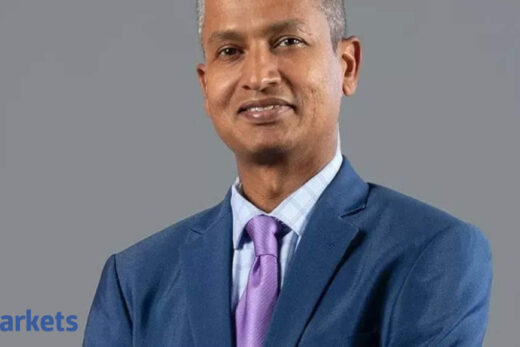The Noida-headquartered company, which saw profits before tax decline in the September quarter in large part due to a softening in its products and platforms business, is still seeing “robust demand” for its products, which accounts for a little over a tenth of its overall revenue, the CEO said.
“October-December will be a strong quarter. It is a slightly long-term strategic bet that HCL has taken, you can go through some ups and downs and that’s certainly part of any business,” added Vijayakumar who is also the managing director of HCL Technologies.
Revenue from services contributes over 88% to HCL’s top line while platforms and products chip in around 11.7%.
The global boom in digital spending is unlikely to abate post pandemic, according to Vijayakumar who reckons that businesses will continue to invest in technology and leverage the benefit of cloud and digitalisation.
“As they roll out a few initiatives, they see the value and will only double down on similar initiatives. That is the reason I see a slightly longer-term trend than (just) a couple of quarters,” he said.
Last week, HCL said that its revenue in the quarter ended September 30 was Rs 20,655 crore, up 2.9% quarter-on-quarter and 11.1% year-on-year. Net income was at Rs 3,265 crore, up 1.6% QoQ and 3.9% YoY.
Analysts, who said they hadn’t expected a muted performance by the company’s products and platforms, termed the performance as below expectations. HCL Tech’s earnings before interest, taxes, depreciation and amortisation (Ebitda) margin dropped 1.8% sequentially and 2.1% year-on-year due to the ‘blip’ in the P&P business, which was down by 8% quarter-on-quarter. In its post earnings note, brokerage firm Emkay Global said that HCL’s operating performance missed expectations in the second quarter of fiscal 2022, largely due to this decline.
Modernisation Drive
The Shiv Nadar-founded IT giant’s “strategy to modernise the products is also creating a lot of new demand,” its CEO said as he underlined his confidence in the segment, which has traditionally been a high margin business.
In December 2017, HCL had acquired IP assets of technology major IBM for security, marketing, commerce, and digital solutions including its email Lotus notes for $1.8 billion.
Terming the company’s performance as “a strong industry leading growth from an organic growth perspective” ,Vijayakumar pointed to a ramp-up in hiring, which saw the company add 11,000 plus people — the highest for the company in its history. “Our bookings have been strong. So, the momentum on the services side is strong and I see good growth moving forward as well,” he said.
HCL also said that the total contract value of new deals signed was $2.2 billion, a 38% YoY growth, led by 14 net new large deal wins. Analysts are of the view that “the strong demand environment and robust deal intake augur well for revenue acceleration”.
Rising Competition
Last week, larger rival Infosys revised its revenue guidance upwards from 14-16% to 16.5-17.5% for the fiscal year, while Wipro echoed the buoyant sentiment announcing that its second quarter profits were up 17.9% to Rs 2,930 crore while revenue rose by 30.1% to Rs 19,667 crore. The two Bengaluru-headquartered IT giants stole a march over industry leader Tata Consultancy Services (TCS), which had failed to meet analysts’ estimates of quarterly growth announced last week.
In an interview to ET, Wipro chief executive Thierry Delaporte has also said that the company will probably approach 30% year-on-year growth in the third quarter.
Responding to ET’s query if Wipro’s strong showing is perturbing him, Vijayakumar said, “We have our own strategy and are very focused on organic growth, at this point in time, because there is a lot of momentum in the market. And on these metrics, we will definitely do very well.”
HCL had unseated Wipro as India’s third-largest software exporter by revenue, earlier in the last decade.
HCL Tech remains “open to smaller deals or tuck-in acquisitions in the digital space, digital engineering space, or in some geographies where we want to accelerate our presence,” the CEO said.
Hybrid Work Model
The company is also moving towards a hybrid work model where the employees have been split in three buckets — one set required to always work from the office, second set which can work remotely permanently, and third set where people would come into the office, at least a couple of days a week. “This is going to be a hybrid operating model, and we’re going to have the best of both worlds, flexibility and comfort of working from home, to the extent possible, and the benefits of meeting in-person, collaborating and learning and doing certain critical tasks within our office premises.”



